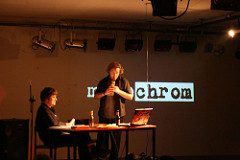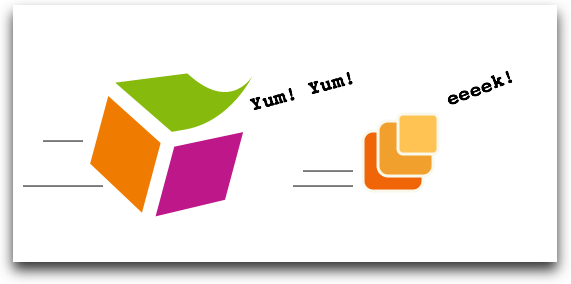In an easily overlooked Press release by Intellidimension, an interesting statement about RDF is done.
Read the interesting part first:
“We chose to integrate the Intellidimension solution based on the strength of its technology and the company’s semantic web expertise,” said John Deutscher, group program manager of Industry Solutions at Microsoft Corp. “We needed a robust and scalable RDF repository with tight integration into SQL Server 2005 to meet our goals for housing extensible metadata in Interactive Media Manager, and RDF Gateway addressed our requirements.”
 Well done! Managing media with this setup is probably very clever.
Well done! Managing media with this setup is probably very clever.
Intellidimension is the company that does RDFGateway, a compact, good-performaning RDF application building platform (store + gui).
The whole press release:
Brattleboro, VT, USA, May 21, 2007 – Intellidimension announces that Microsoft has integrated Intellidimension RDF Gateway in their new product, Microsoft Interactive Media Manager. Interactive Media Manager is a server-based solution which enables organizations to better manage the complexity inherent in the digital content lifecycle, from content creation to management to distribution. The solution, an extension of Microsoft Office SharePoint Server 2007, is specifically designed for organizations in the media and entertainment industry, including film, television & postproduction studios, broadcasters, game developers, publishers and advertising and marketing agencies.
We’re excited about our work with Microsoft, which combines Intellidimension technologies with their recently introduced Interactive Media Manager solution,” said co-founder and CEO of Intellidimension Geoff Chappell. “It’s inline with our business goals and is an important vote of confidence in our technology. It’s also a great sign for the semantic web in general that a technology leader such as Microsoft is embracing semantic technologies.”
As part of this integration, Intellidimension enhanced RDF Gateway to support Microsoft SQL Server 2005 as a storage engine for its RDF deductive database. This integration with SQL Server will be available widely with the next release of RDF Gateway, providing Intellidimension enterprise users all of the capabilities of RDF Gateway with the added reliability and manageability of SQL Server for their mission critical data.
“We chose to integrate the Intellidimension solution based on the strength of its technology and the company’s semantic web expertise,” said John Deutscher, group program manager of Industry Solutions at Microsoft Corp. “We needed a robust and scalable RDF repository with tight integration into SQL Server 2005 to meet our goals for housing extensible metadata in Interactive Media Manager, and RDF Gateway addressed our requirements.”
About RDF Gateway
RDF Gateway is a high-performance, scalable semantic web server with a RDF deductive database at its core. Its dynamic scripting environment, rules-based inference, and host of other powerful features enable rapid development and deployment of semantic web applications. Its scalable architecture and proven performance keep applications running as data requirements grow.
About Intellidimension
Intellidimension, founded in 2000, provides solutions to satisfy today’s demands for richer information. The company supports the vision of a Semantic Web in which information is easily shared and re-purposed, and where a new generation of tools offer increased information automation by harnessing the power of networked, intelligent data. Its technologies enable the development of practical applications incorporating this vision.
Thanks to Intellidimensions CEO Geoff Chappell to point me to the press release.

 by
by  by
by  Well done! Managing media with this setup is probably very clever.
Well done! Managing media with this setup is probably very clever.